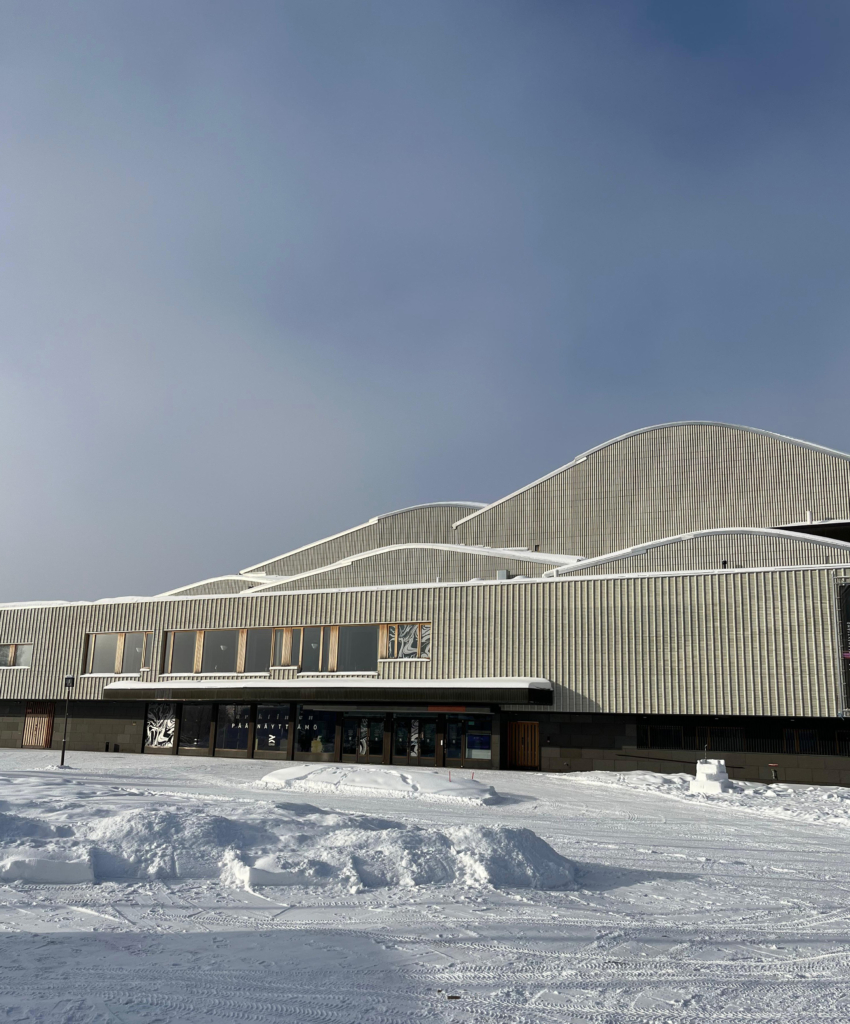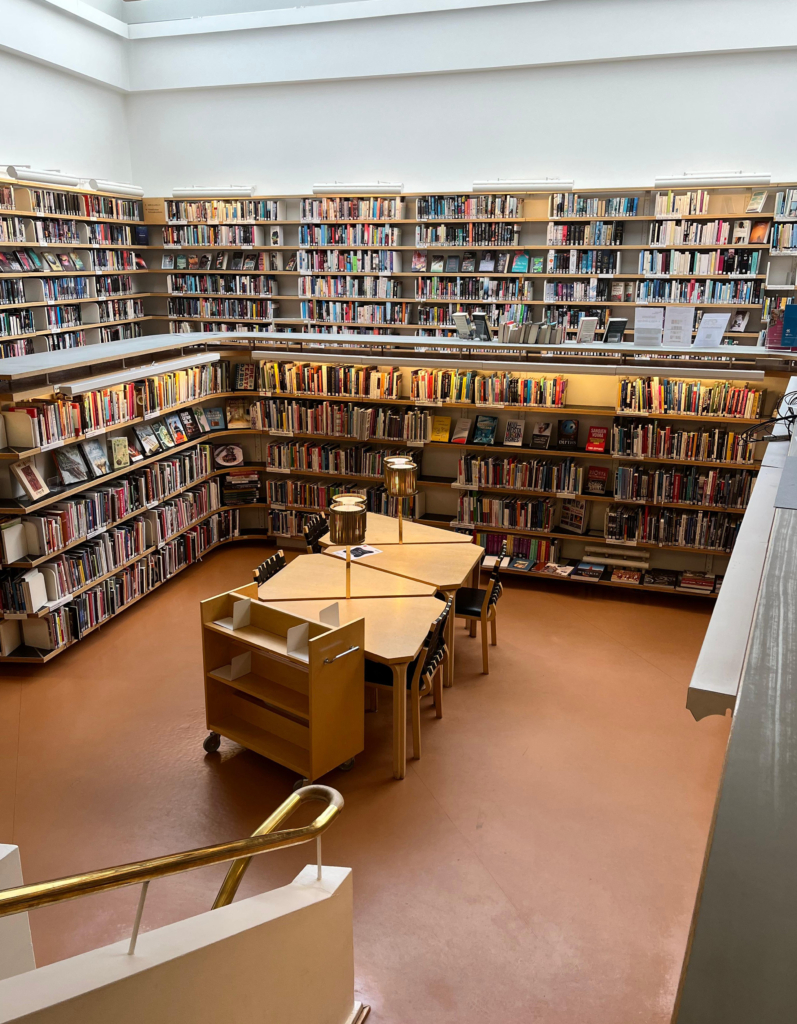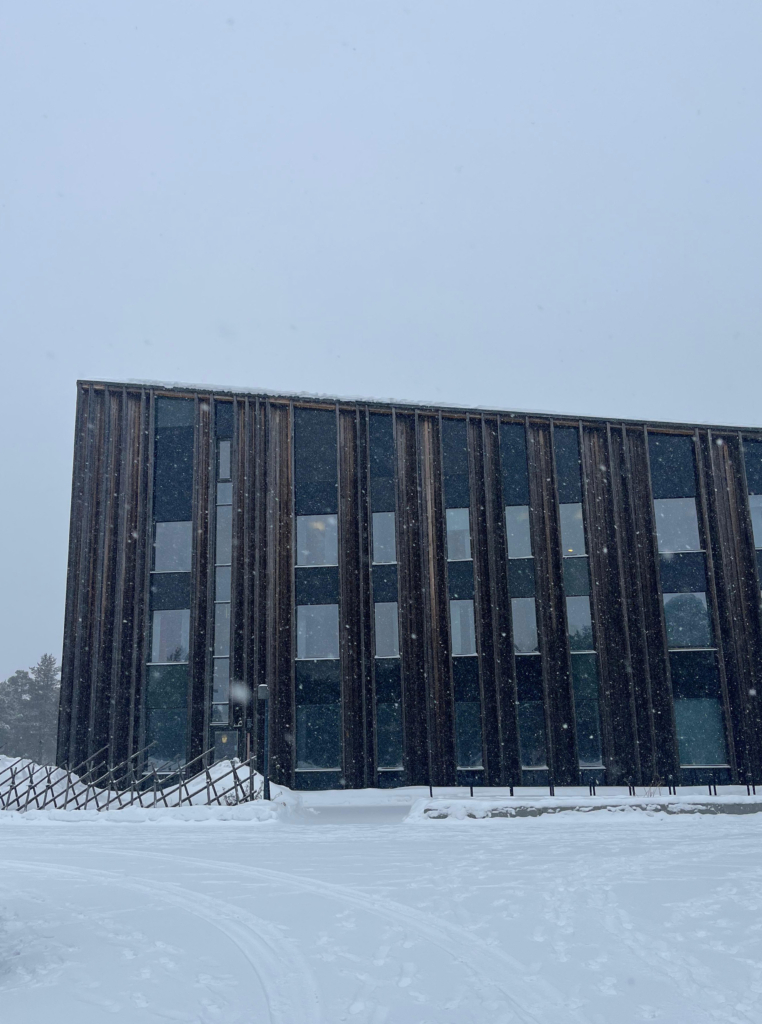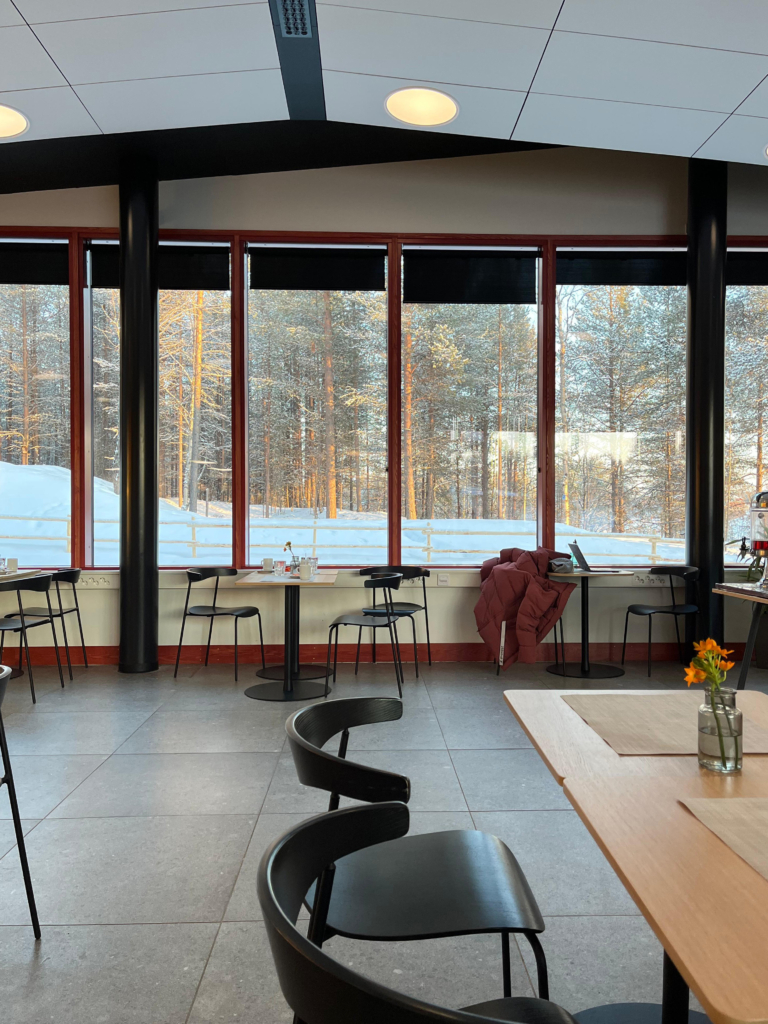An Architectural Adventure in Finland’s Far North
Most travel guides to Finland start in Helsinki. This one doesn’t. Instead, junior architect Su Demir, creator of Places i Need To Go and See, goes further north – past the capital, past the obvious – to reveal the region of Lapland, where modernist icons sit beside Sámi institutions, and where buildings are not just designed for humans, but in conversation with land, culture and time.
Across Rovaniemi and Inari, Su’s recommendations trace a path through libraries, parliaments and performance halls – spaces where light matters as much as form, and where architecture reflects something deeper than style. Here’s a long weekend guide through Finland’s far north – all the more memorable for not following the crowd.
FRIDAY: ROVANIEMI
1. Lappia Hall by Alvar Aalto

Lappia Hall sits in Rovaniemi, right near the Arctic Circle. It’s a performance hall and conference centre, but more than that, it’s a slice of modernist poetry set into the Lapland landscape. Designed by Alvar Aalto, the building wears the marks of his late-career style – clean whites, soft woods, and the kind of blues that belong to the North.
The exterior roofline undulates like the fells – those long, low hills that roll through Lapland – and at night, when the lights hit it right, it shimmers like the Northern Lights themselves. You can catch a glimpse of that in my story.
Inside, it’s all restraint and warmth. Everything is intentional: the lights, the furniture, the proportions of silence and sound. Most of it comes from Artek, Aalto’s own design house. It’s a building that doesn’t just hold performances – it performs itself.
I found myself there last year, on a uni field trip. We were supposed to be touring the building, but I wandered off – half curious, half lost – and somehow slipped into a room that probably wasn’t meant to be open. It looked closed off, maybe under maintenance or just resting between events. But being in that quiet, unguarded space made the experience all the more intimate. It felt like stepping into a pause in time.
SATURDAY: ROVANIEMI
2. Rovaniemi Library, Alvar Aalto

I saw this library in 2023, during my first year of the master’s in architecture. We’d made our way north – Rovaniemi in early spring still frozen and quiet, the light stretched thin like paper. The library, completed in 1965, was the first piece of Aalto’s administrative and cultural masterplan for the city. It feels like a beginning – both for Rovaniemi, and maybe also for me, back then.
The building is split: one part is the wide, sweeping fan-shaped hall; the other, a simple rectangular wing for offices. The library hall slopes down into the reading zones, like a quiet bowl. Aalto always did that – put reading areas in depressions, lowered from the rest, cradled. You feel enclosed, held. And because of the fan shape, staff can see everything from the centre – almost like a stage, but reversed. The library watching you, not the other way around.
Light is everything. The way it enters through rooflights and clerestories, diffused and indirect, it feels like the building is filtering the sky. In that latitude, light itself changes character: bleak and blue in winter, endless and gold in summer. Aalto knew that. He played with it. The building glows in its own rhythm. He didn’t just design with daylight – he designed for time: changing hours, changing seasons.
Some of the pieces inside are from Artek – standard, yes – but the team also designed custom furniture, and apparently over ten types of lighting just for this building. They knew this place needed its own vocabulary.
Right now the library is closed, mid-renovation, due to reopen some time this year. But if you ever find yourself in Finland – go. It’s not a grand building, but it knows exactly what it is. It understands people, light, and silence. And maybe that’s enough.
SUNDAY: INARI
3. Sámi Cultural Centre Sajos, Inari

In Inari, where the lake is wide and the pines stretch up like slow prayers, there’s a building that sits low and dark against the snow: the Sámi Cultural Centre Sajos, finished in 2012. It’s not loud. It doesn’t announce itself. It listens.
This is the administrative heart of the Sámi people in Finland – one of the few places where Sámi language, law and culture are held and spoken officially. The building is by HALO Architects, a Finnish firm, but more than that it feels like it was shaped by the land itself.
Outside: black-stained timber, horizontal lines, nothing ornamental. The building blends into the forest. It looks like it grew there. Or maybe was always there, waiting.
Inside: curves, warm wood, a quiet sense of ceremony. The plenary hall is circular – no hierarchy. Everyone faces each other. Like old gatherings, old ways. The structure is meant to recall traditional Sámi tents, the lávvu. A central space – fireless now, but still full of warmth.
Light comes in carefully – angled and considered. This far north, light isn’t just brightness. It’s presence, absence, a reminder. The building doesn’t fight the dark. It makes room for it.
There’s something about Sajos that feels necessary. Not in a grand, symbolic way. But in a rooted, grounded way. It’s not trying to be architecture. It’s trying to be place. And it is.
4. Siida – Sámi Museum and Nature Centre, Inari

Further north, still in Inari, there’s another building – close to Sajos, but older. Quieter in a different way. A museum, yes, and a nature centre too, but more like a vessel. A container of memory, of land, of people.
The original building dates to 1998, with an extension completed in 2022. But even before the renovation, Siida felt like it had been there longer than its materials would admit. Something in the way it sits low against the earth – its long dark timber cladding, the roofline tracing the soft fall of the landscape. It doesn’t disturb anything; it joins in.
Inside, there are no grand gestures. Just rhythm. Wood. Soft transitions. And stories – woven into displays, sound, language, tools, objects. You move through Sámi history, but not as an outsider looking in. More like being invited to sit around the fire, to listen.
It’s also about the north itself – the land, the reindeer, the trees and rivers, the seasons that fold over each other in light and dark. Nature isn’t a backdrop here. It’s an actor. The permanent exhibition is called Enâmeh láá mii párnáh, or These lands are our children. That line stays with you.
Siida’s architecture holds all this without needing to be loud. It doesn’t perform. It shelters. It reflects. And like the culture it represents, it feels resilient, patient and deeply tied to place.
If you go, don’t rush it. Walk through the museum. Step outside to the open-air exhibits. Listen to the gravel under your boots. Watch the sky shift. That’s Siida. Not a monument. A memory, still living.
Not heading to Finland any time soon? Check out Su’s guides to Istanbul and London.